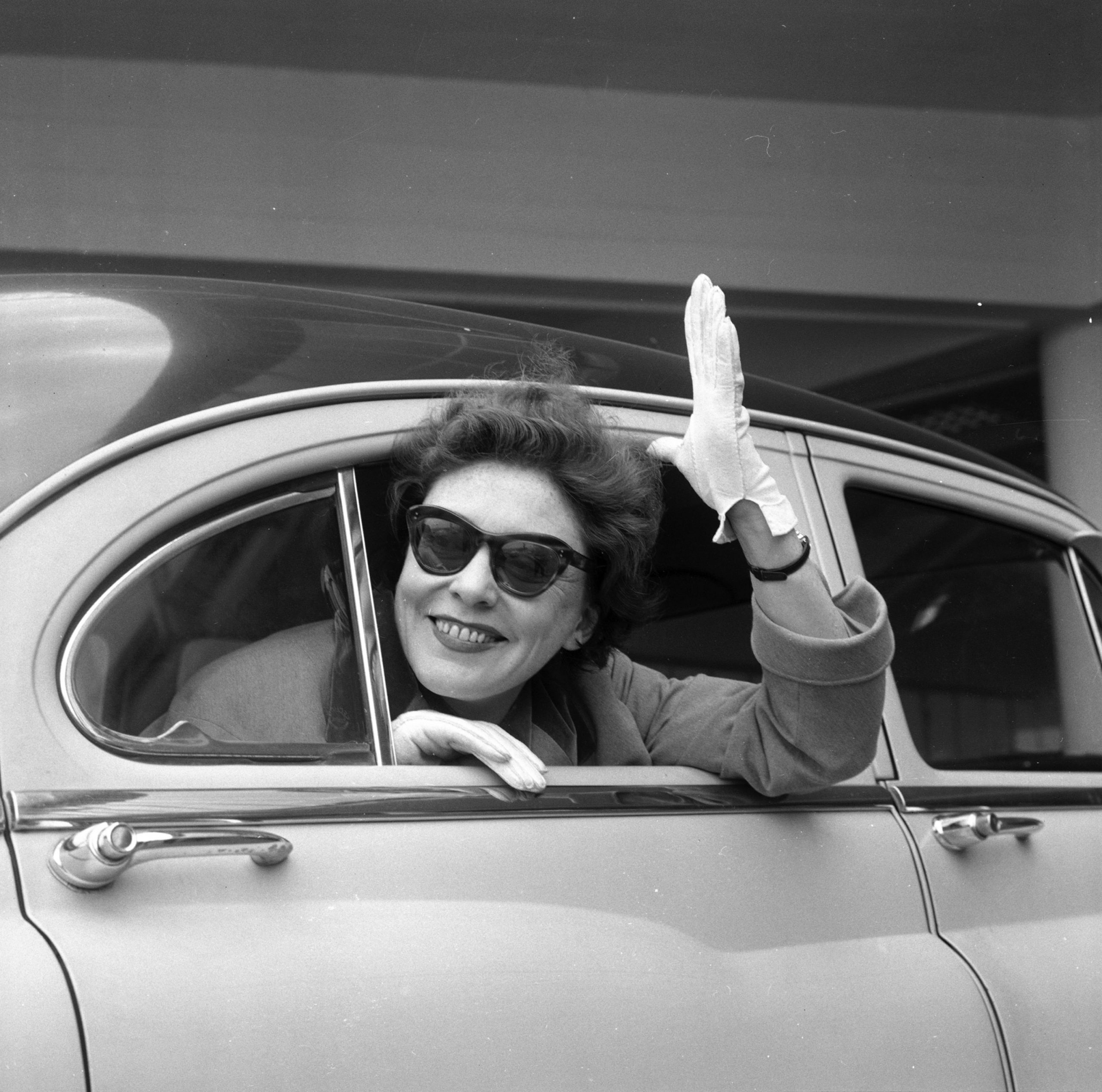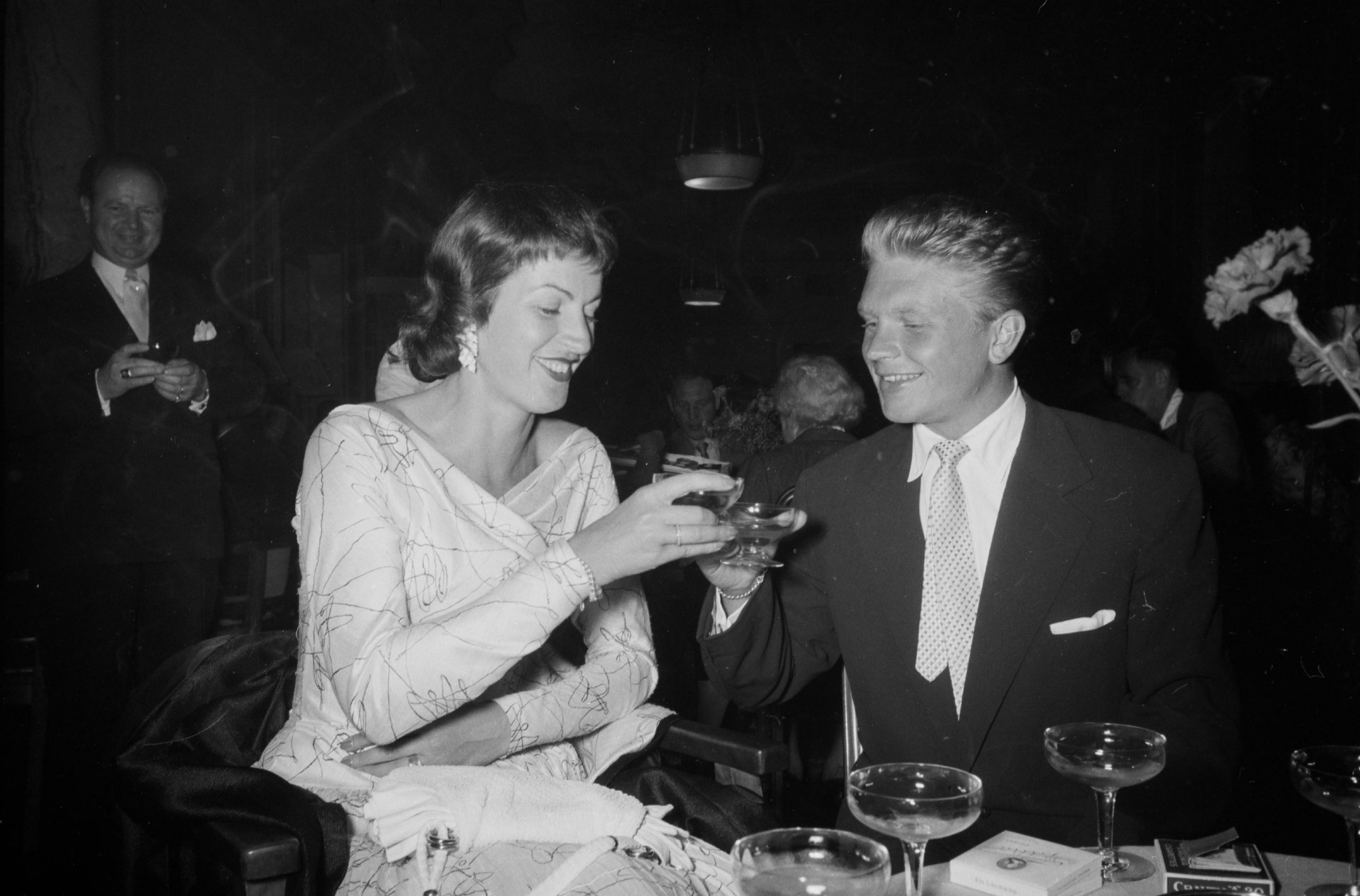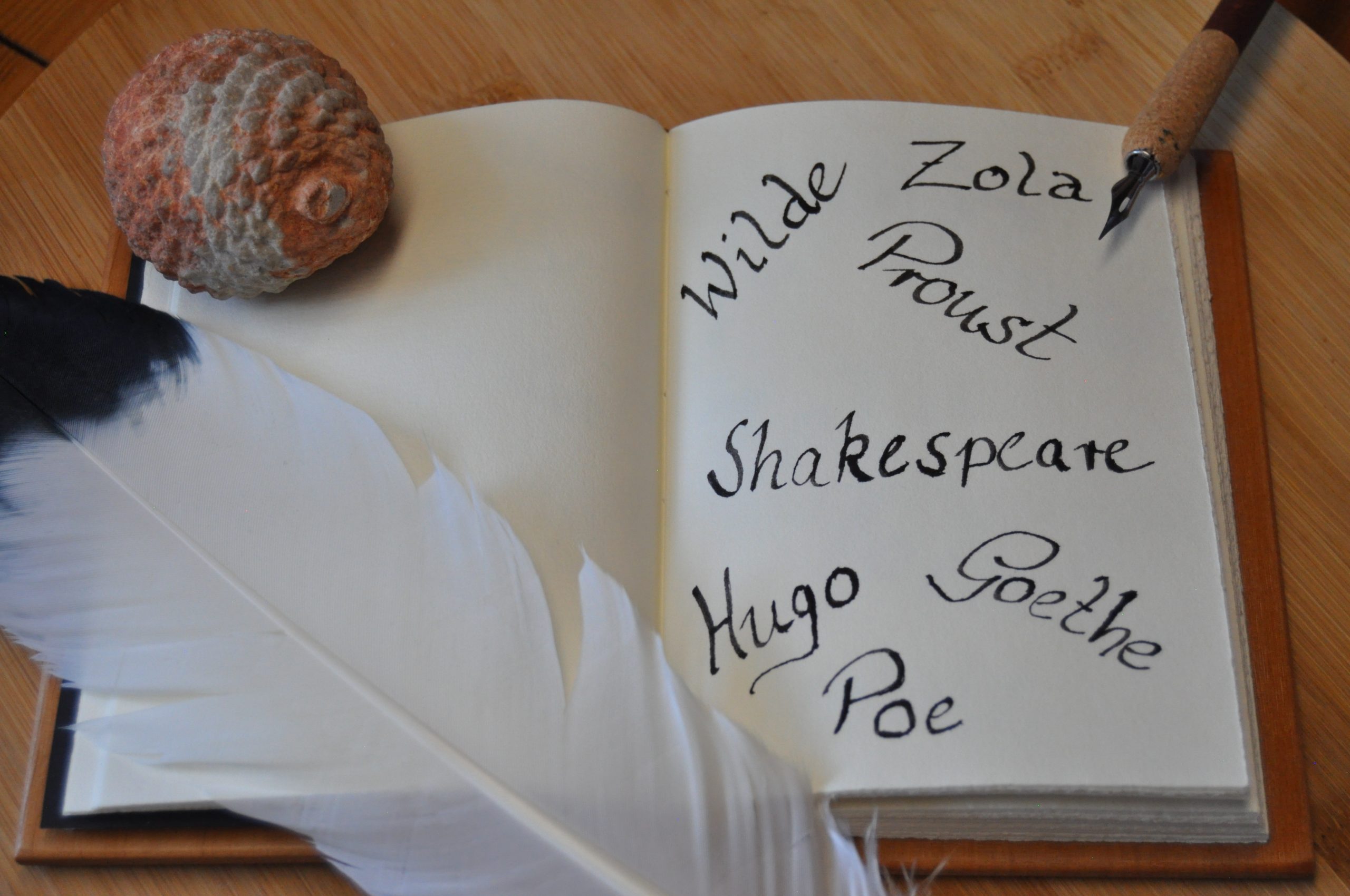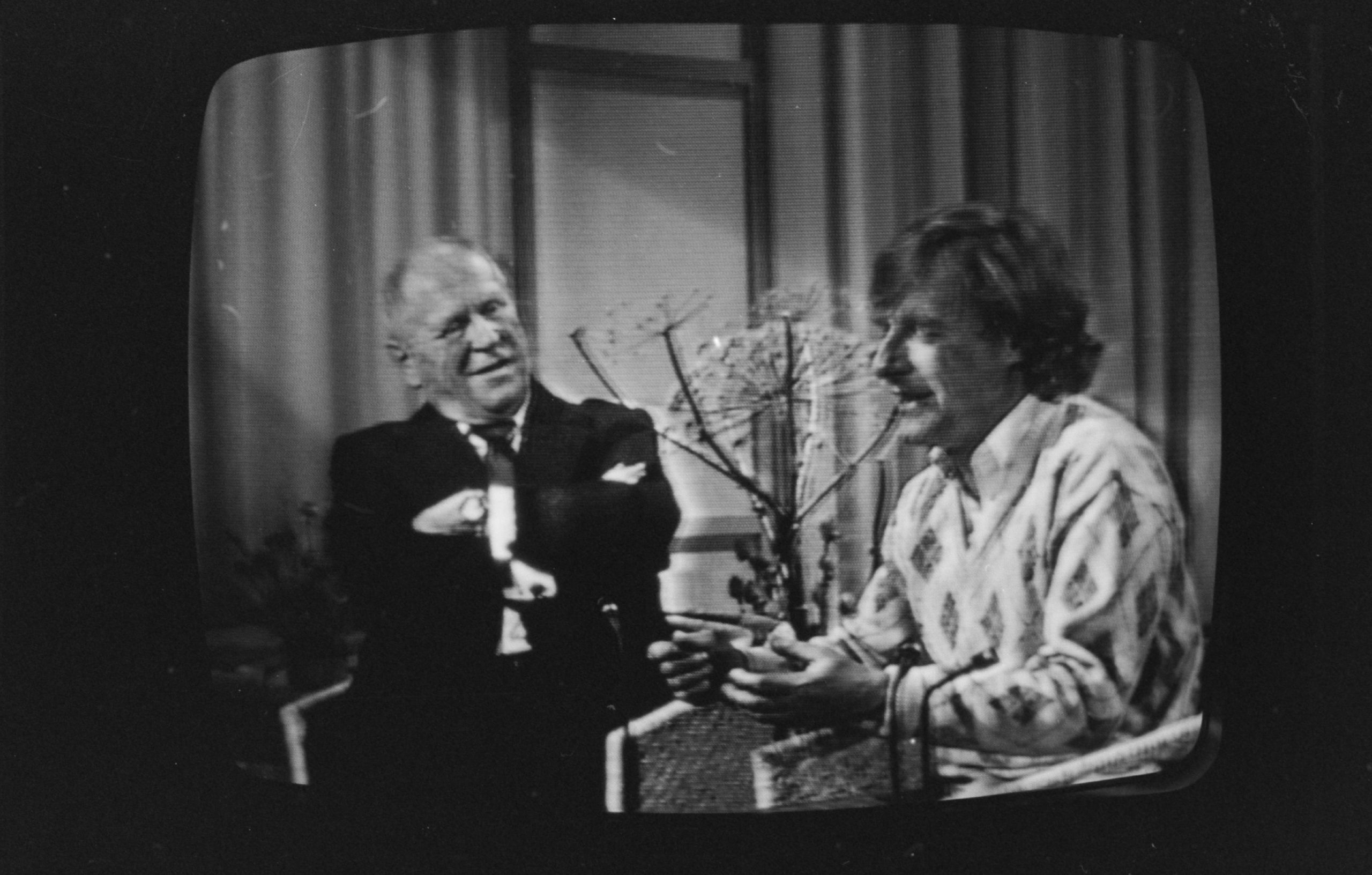“Anyone who knew how to die with humor would have reached the highest level of culture,“ [Original quote: “Wer mit Humor zu sterben verstünde, hätte die höchste Stufe der Kultur erreicht“] is a sentence Curt Goetz once had his character Dr. med. Hiob Prätorius say in the stage play of the same name. The stage play Frauenarzt (German for: Gynecologist) Dr. med. Hiob Prätorius is undoubtedly one of Goetz’s most brilliant works: The work was so well received by audiences that it was filmed a full three times – in the first film version, Goetz himself took the lead role; in another film version, Heinz Rühmann played the role of Dr. med. Hiob Prätorius.
Curt Goetz was considered a specialist of “fine” humor, who not only made the audience laugh, but also made the audience think. The playwright and actor, who was born in Mainz, developed his own Curt Goetz humor with his works, which did not exist in this form a second time. When Goetz, in his role of Dr. med. Hiob Praetorius, lectures to his medical students in a humorous yet thoughtful manner about the “microbe of human stupidity,” one thing becomes clear: Curt Goetz’s humor is timeless.
An (un)talented student
In 1907, Kurt Götz – as he still called himself at the time – made his stage debut at the Stadttheater Rostock: Curt Goetz began his career as an actor and playwright where many of the greatest German-speaking actors of the 20th century began their stage careers: On the provincial stage. The actress Magda Schneider once recommended her famous daughter Romy Schneider to go to a provincial stage in order to learn her profession “properly” – Magda Schneider, like Curt Goetz, belonged to a generation of actors who learned their profession “from scratch” in backwater towns.
One might think that Curt Goetz was a particularly gifted student of German in his school days – but this assumption is far from the truth. It was not uncommon for his papers and essays to be graded “unsatisfactory,” but the young Goetz was not bothered by this: Even from his early texts, a talent for writing can be gleaned that evidently broke many a scholastic grading system.
It wasn’t long before Curt Goetz became a sought-after playwright in addition to his profession as an actor.
Actor and author at the same time
Thanks to the mediation of his stepfather, Curt Goetz was given the opportunity to take acting lessons with the renowned drama teacher Emanuel Reicher: Although his mother, who ran a private clinic – hence Goetz’s lifelong fascination with medicine – would have preferred her son to be a doctor, the world of theater held a greater fascination for Curt Goetz. This did not stop him from incorporating medical themes into many of his stage works – including Dr. med. Hiob Prätorius.
In 1911, after a few years on provincial stages, Curt Goetz found his way to Berlin: there he first appeared at the Kleines Theater unter den Linden and the Lessingtheater. Goetz’s activity as a theater actor was primarily characterized by the classical Shakespearean repertoire and by works of George Bernard Shaw and August Strindberg. Curt Goetz also appeared in numerous silent movies between 1912 and 1923.
But Curt Goetz was not satisfied with performing another playwright’s repertoire and wanted to have creative sovereignty over a play himself. It was therefore not long before Curt Goetz became a sought-after playwright in addition to his profession as an actor – he wrote his first stage play Der Lampenschirm (The Lampshade) as early as 1911, and it premiered in 1925. Curt Goetz’s existence in Berlin, however, was initially built on shaky ground: although his mother supported him, her private clinic was no longer a guarantee of financial returns in the midst of an economic crisis. Goetz would soon have to make a living out of his art….
The sophisticated boulevard comedy
In 1923 Curt Goetz met the actress Valérie von Martens in Vienna, whom he married shortly thereafter: von Martens became not only Goetz’s wife, but also his partner on stage and screen. The young playwright’s goal was to establish himself as a sought-after author of sophisticated boulevard comedies: In his view, the boulevard theater should by no means take precedence over the classical theater, which included plays such as those by Shakespeare. But Goetz experienced that boulevard plays could make the audience reflect in a humorous way without sacrificing intellectual range. In the twenties and thirties, Curt Goetz wrote numerous stage plays, the film versions of which found great resonance after the Second World War: Among the best-known works from this period are the stage play Hokuspokus (1927) or, for example, Curt Goetz’s first sound film work, Napoleon ist an allem schuld (Napoleon is to blame for everything, 1938). In Napoleon ist an allem schuld, Curt Goetz starred alongside his wife Valérie von Martens, directed the film, and wrote the screenplay. One could almost say that a Curt Goetz production was a one-man show: especially in Napoleon ist an allem schuld, Goetz’s enormous talent for witty dialogues becomes clear. Like no other, Goetz could write humorous and pointed dialogues at the same time – a Curt Goetz comedy was and is something very special.
Curt Goetz and the last Greta Garbo movie
“It was a childhood dream of my husband to run a stage,” Curt Goetz’s wife Valérie von Martens once confessed in the memoirs she published after her husband’s death.
But this dream of running a stage initially became a distant memory with the start of the Second World War: together with his wife von Martens, Curt Goetz emigrated to the United States. There Goetz worked in Hollywood, among other things as a screenwriter for MGM – but he never really felt comfortable in Hollywood.
At the end of the 1930s, Curt Goetz was invited to write the screenplay for the last Greta Garbo film: After numerous story conferences with producers, however, almost the entire concept of Goetz’s original story was discarded and the producers retained only some of Goetz’s ideas. In the end, although Curt Goetz contributed to the story for the film, he received no credit for his work on the last Garbo film, The Two-Faced Woman (1941). The film was Garbo’s last work primarily because it was a financial failure and critics trashed it: One might wonder if Curt Goetz’s version of the story would also have been trashed…
Curt Goetz later wanted nothing to do with Hollywood producers – he decided, despite a personal invitation from Louis B. Mayer, not to sign a contract with MGM and instead opened a chicken farm: He “would rather look 2000 chickens under the rump than a producer in the face,” said his wife Valérie von Martens in the memoirs about her husband. Curt Goetz ran the chicken farm in Van Nuys together with his wife until the end of the Second World War, after which they both returned to Switzerland. His experiences in Hollywood provided Goetz with material that he used in his “satire of a bestseller,” the novel Die Tote von Beverly Hills (The Dead Lady of Beverly Hills, 1951) – a parody of the sophisticated world of Hollywood.
“Curt, you don’t know how lucky you are to be your own director.”
Hans Albers
Curt Goetz: His own director
After World War II, Curt Goetz regularly went on large-scale theater tours that made the actor and author known to the far corners of the German-speaking world: Where else could one experience a playwright who starred in his own works? One of Curt Goetz’s secrets was that he wrote his own roles – a privilege that hardly any playwright or actor enjoyed. Usually, to this day, a playwright or screenwriter must rely on the actor, who is responsible for interpreting the role in the author’s sense. Conversely, the actor has to rely on the fact that the offered role fits into his role subject and his other repertoire. This often poses a problem in theater and film – Curt Goetz got around this problem by being both actor and author at the same time.
“Curt, you don’t know how lucky you are to be your own director,” Hans Albers reportedly once said to Goetz – and how right Albers was with this remark.
The wandering actor and director
In the early fifties, several film adaptations of Curt Goetz plays were realized with himself in the leading role: The film adaptations Frauenarzt Dr. med. Hiob Prätorius (1950), Das Haus in Montevideo (“The House in Montevideo“, 1951) and Hokuspokus (“Hocus Pocus“, 1953) are magic moments of German cinema after the Second World War. At the same time, they were the high point and the final point of Curt Goetz’s career as a theater and film director: starting in the late 1950s, Curt Goetz withdrew from active professional life for health reasons. Goetz died on September 12, 1960, a few months before his 72nd birthday.
Curt Goetz’s theater tours attracted a great deal of attention, not least because wandering theater ensembles hardly existed in the mid-20th century anymore: By now, actors were no longer a nomadic people; only for a circus is it customary to travel from city to city to this day. But Curt Goetz did not bind himself permanently to a stationary theater, but instead traveled with his ensemble from city to city.
The actor and playwright Curt Goetz is still considered a master of the sophisticated boulevard comedy: With his works in the theater and film world, the “Peterhans von Binningen,” as he called himself in his memoirs, immortalized himself and continues to fascinate film and theater enthusiasts to this day.
Cover picture: © Simon von Ludwig
Main source: Goetz, Curt & von Martens, Valérie: Memoiren (Die Memoiren des Peterhans von Binningen, Die Verwandlung des Peterhans von Binningen & Wir wandern, wir wandern…), 1989 Deutsche Verlags-Anstalt Stuttgart

 Deutsch
Deutsch







